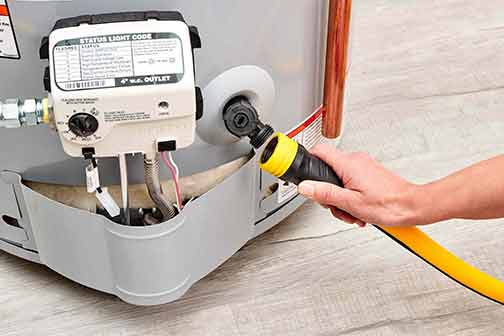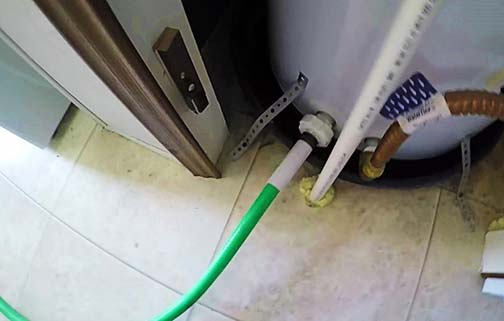
Water heaters are often taken for granted when it comes to home maintenance. You use them daily and they tend to work fine with little maintenance. However, it’s important to not ignore potential problems. If left unchecked, water heater repair issues will only get worse, resulting in a more expensive repair or even having to replace the water heater heater.
A professional water heater repair service can help you determine what issue you are having and have it fixed quickly and properly. Signs that your water heater needs maintenance include leaks around the base, a decrease in hot water due to a higher temperature setting than necessary, rust-colored water coming out of the tap, or a screeching sound coming from the heater. All of these signs could mean that you need to flush your water heater or even replace it.
Regular maintenance like water heater flushing is essential to ensure your water heater is running properly. An experienced technician can flush your water heater by using a garden hose to remove any sediment build-up from the bottom of the heater. This is recommended every few years, or sooner if you notice sediment build-up inside your tank.
When it comes to more detailed repairs, like replacing the heater’s control panel, venting system, or anode rod, an experienced technician with the proper tools and know-how can help make sure these repairs are done correctly. An experienced local plumber will also know exactly how to adjust or replace the temperature and pressure relief valve to meet local code requirements.
DIY Water Heater Repair
Although it may be tempting to try to repair your water heater yourself, there are numerous reasons that a home-owner should leave it to the professionals.
Water heaters can be complicated to repair and if not done correctly, DIY repairs could make the problem worse or cause more damage. Not having the right tools or knowledge can result in costly repairs down the line or worse, injury or electrocution. Fixing the water heater on your own could also void the warranty and cost you more in the long run.
If you do decide to try repair it yourself, make sure you are well-informed before beginning any repair or maintenance. Check the manufacturer’s website and make sure you have the right tools and parts to make the repair. It’s always best to turn off the power to the heater before completing any repair and take all necessary safety precautions.
Water Heater Flushing
Water Heater flushing is an important water heater maintenance task that should be done regularly. If left unchecked, sediment and minerals can build-up in the tank and reduce its efficiency. It can also damage the heater over time and make repairs more costly.
Flushing a water heater is relatively simple and can be done with a garden hose. However, if you notice an increase in sediment or mineral build-up, then it’s best to call in a professional. An experienced plumber can flush the system and help diagnose any other maintenance issues you might be having.
Regular water heater maintenance, including flushing and cleaning, can help prevent costly repairs or replacements down the line and keep your water heater running optimally.
In conclusion, water heaters require regular maintenance and repairs to ensure they are running correctly and efficiently. Flushing and cleaning should be done regularly and any potential issues should be addressed right away to avoid more costly repairs. If you have questions or need professional help, it’s best to call a plumber as they are experienced with all aspects of water heater repair and maintenance.
